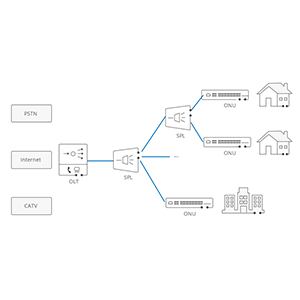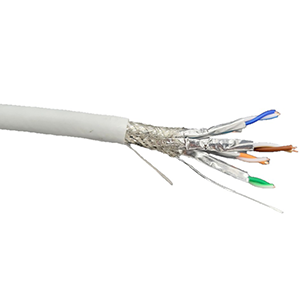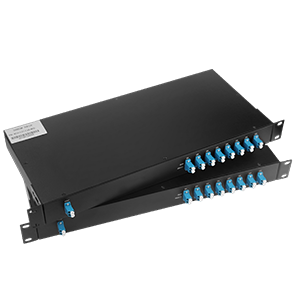Broadband access networks play an important role in contemporary networks. This article will explore GPON (Gigabit Ethernet Passive Optical Network) technology. We will first review the advantages of optical fiber as an access network transmission medium and explain the basic architecture of optical fiber access networks.
Next, we will define the core concepts of GPON technology and explain its working mechanism. Then, we will introduce the key performance indicators and deployment advantages of GPON. Finally, we will analyze the application of GPON technology in home/enterprise access and telecom operator networks and explain how it can meet the high bandwidth needs of different users.
What is Fiber Access Network
Fiber access networks use optical fiber technology to directly connect user terminals to the network to provide high-speed and stable Internet services. Compared with traditional copper wires, optical fiber can support higher bandwidth and longer transmission distances, reducing signal attenuation and interference. Fiber access is often used for home and enterprise broadband services to improve network speed and reliability.
1. Advantages of optical fiber as access network transmission media:
- Large bandwidth:
- Optical fiber can provide extremely high information transmission bandwidth to meet users’ needs for high-speed networks.
- Anti-interference:
- Optical fiber transmission is not affected by electromagnetic interference, and the signal quality is stable and reliable.
- Long transmission distance:
- Optical fiber can achieve long-distance signal transmission, which is suitable for the coverage requirements of access networks.
- High security:
- Optical fiber cables will not leak signals and have high security.
2. Basic architecture of fiber access network:
- Backbone network:
- High-speed fiber backbone network using DWDM technology.
- Convergence network:
- Converge the optical signal of the access network to the backbone network.
- Usually using CWDM technology.
- Access network:
- Using FTTH, FTTB and other technologies, the optical fiber is directly connected to the user terminal.
In short, the fiber access network gives full play to the advantages of fiber transmission media and provides users with high-speed and reliable network access services. Its hierarchical structure ensures the scalability and flexibility of the network, and is the main development trend of access networks in the future.
Basic principles of GPON technology
GPON (Gigabit Passive Optical Network) technology is a fiber access technology that uses a passive optical distribution network to distribute fiber signals to multiple users. It transmits data through an optical line terminal (OLT) and multiple optical network terminals (ONT). GPON supports up to 2.5Gbps downstream bandwidth and 1.25Gbps upstream bandwidth, with the characteristics of high efficiency and high bandwidth.
1. Core concepts of GPON technology:
- Passive optical network based on passive optical splitters:
- GPON uses passive optical splitters as the core components of the optical distribution network.
- Time division multiplexing is used to achieve uplink and downlink transmission:
- GPON uses time division multiplexing technology to achieve uplink and downlink transmission on the same optical fiber.
2. Working mechanism of GPON technology:
- Uplink uses TDMA:
- GPON’s uplink transmission uses time division multiple access (TDMA) technology.
- User terminal equipment sends uplink data in turn according to the allocated time slot.
- Downlink uses broadcast:
- GPON’s downlink transmission uses broadcast mode, and the data sent by the OLT device is shared and received by all users.
GPON technology achieves efficient transmission of fiber access networks through passive optical splitters and time division multiplexing mechanisms. TDMA is used in the upstream to avoid conflicts, and broadcast is used in the downstream to maximize bandwidth utilization. This architecture is simple and reliable, and is widely used in fiber access networks such as FTTH to provide users with high-speed and stable broadband services.
Main features of GPON technology
The main features of GPON technology include: high bandwidth, supporting 2.5Gbps downstream and 1.25Gbps upstream; passive optical distribution, reducing network construction and maintenance costs; supporting multiple services, including voice, data and video; strong scalability, and can serve multiple users at the same time. GPON provides stable and high-speed network connections and is widely used in fiber-to-the-home (FTTH) applications.
1. Key performance indicators of GPON technology:
- Supports 2.5Gbps downstream and 1.25Gbps upstream:
- GPON can provide up to 2.5Gbps downstream bandwidth and 1.25Gbps upstream bandwidth.
- The maximum transmission distance can reach 20km:
- GPON network coverage can reach up to 20 kilometers.
2. Advantages of GPON deployment:
- Low investment cost:
- GPON uses passive optical splitter technology, and the deployment cost is relatively low.
- Strong flexibility:
- GPON architecture is flexible and can be flexibly expanded and upgraded according to user needs.
- Can carry multiple types of services:
- GPON can simultaneously support multiple business needs such as voice, video, and data.
In general, GPON has become the mainstream technology for fiber-optic access networks with its high bandwidth, long distance, and low cost. GPON can effectively meet users’ demand for high-speed, reliable broadband access and provide sufficient network capacity for future business development.
The wide application of GPON technology will help accelerate the deployment of fiber access networks, promote the popularization of broadband networks, and promote the development of digital economy and social informatization.
Application of GPON technology in access networks
GPON technology is mainly used in fiber-to-the-home (FTTH) solutions in access networks. It distributes fiber signals to multiple users through passive optical distribution to provide high-bandwidth, high-speed Internet services. GPON can support multiple services such as data, voice and video in access networks, reduce network construction and maintenance costs, and improve user experience.
GPON technology plays an important role in both home/enterprise access networks and telecom operator networks.
1. Application of GPON in home/enterprise access:
- Provide access for broadband Internet access, IPTV, etc.:
- GPON can provide high-speed and stable broadband access services for home and enterprise users.
- It also supports interactive multimedia services such as IPTV.
- Applicable to FTTx (Fiber to X) deployment scenarios:
- GPON technology is widely used in fiber access scenarios such as FTTH and FTTB.
- Meet the needs of end users for high-bandwidth access.
2. GPON’s role in telecom operators’ networks:
- Supporting fiber-to-the-home (FTTH) services:
- GPON, as the core technology of FTTH networks, helps operators provide pure fiber access services.
- Meet users’ demand for high bandwidth:
- GPON’s high bandwidth characteristics can meet users’ demand for high-speed broadband.
- Improves the overall performance and competitiveness of operators’ networks.
In short, GPON technology plays a key role in the field of access networks. It not only provides high-quality fiber access services for home and enterprise users, but also becomes an important technical support for telecom operators to deploy FTTH networks. The widespread application of GPON will help promote the popularization of broadband networks and provide strong infrastructure support for the development of the digital economy.
Summary
GPON technology is a key technology for broadband access networks. Our company has long focused on the research and development and application of optical communication products and has rich practical experience. We provide a full range of GPON equipment products that can meet the needs of different access network scenarios.
Our GPON products use industry-leading technical solutions and have achieved excellent levels in transmission performance, reliability and manageability. At the same time, our team of engineers will provide you with professional demand analysis and solution design services to ensure that the deployed GPON solution can meet your actual needs to the greatest extent. Contact us now to learn more.
Network GPON FAQ
GPON stands for Gigabit Passive Optical Network, a telecommunications technology that provides high-speed internet access through fiber optic cables.
GPON uses passive optical splitters to divide the optical signal from a central office into multiple fibers, allowing multiple users to share the same connection.
Key components include the Optical Line Terminal (OLT), Optical Network Units (ONUs), and passive optical splitters.
GPON can support downstream speeds of up to 2.5 Gbps and upstream speeds of up to 1.25 Gbps.
Advantages include high bandwidth, long-distance transmission, reduced costs due to passive components, and easy scalability.
GPON is specifically designed for point-to-multipoint connections, while other technologies like EPON (Ethernet Passive Optical Network) may use different protocols and architectures.
GPON is commonly deployed in Fiber-to-the-Home (FTTH) and Fiber-to-the-Business (FTTB) applications to deliver high-speed broadband services.
Yes, GPON is suitable for business applications, offering high-speed internet and reliable connections for various enterprise needs.
Limitations include the need for specialized equipment and potential issues with bandwidth sharing among multiple users in a shared network.
GPON networks can be easily upgraded or expanded by adding more ONUs or increasing the capacity of the existing OLT without significant infrastructure changes.





